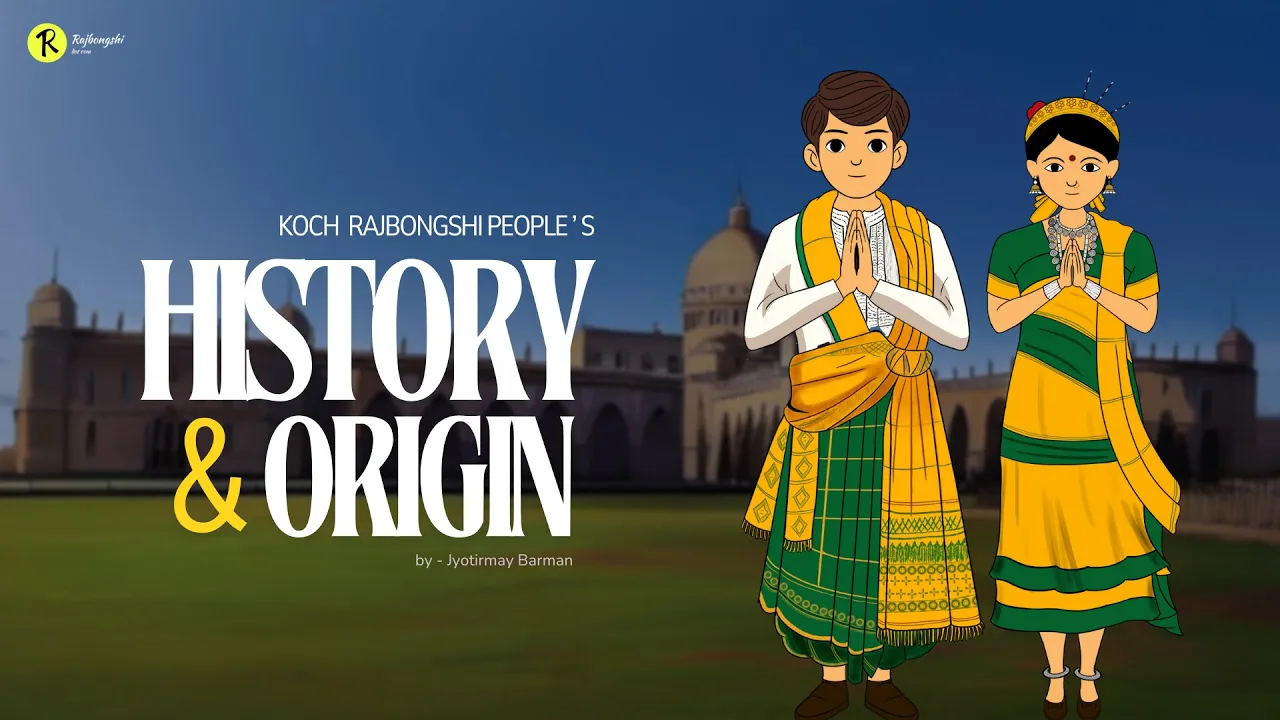We are preserving the Koch Rajbongshi History
Honoring the Past, Inspiring the Future

History
Section 1: Introduction
The Koch-Rajbongshi Community: A Diverse Ethnic Group with Historical Roots
The Koch-Rajbongshi are a prominent community with a complex and fascinating history. According to historian D. Nath, their origins trace back to Mongolian tribes from the Himalayan region, likely Tibet. They are believed to have migrated into present-day North Bengal and Assam by following the Teesta and Dharala rivers. In this new land, they integrated with local populations (probably Dravidian tribes), resulting in a unique ethnic identity where Mongolian features became prominent. This group shares close ancestral ties with other regional tribes like the Boro, Dhimal, Hajong, Mech, and Garo. Today, they primarily reside in North Bengal, Lower Assam, parts of Bihar and Nepal, and the Rangpur division of Bangladesh.
Section 2: Evolution of Identity
2.1 Tracing Ancient Origins
The name "Koch" itself has been a subject of historical debate. Scholar S.K. Chatterjee suggested it evolved from the Sanskrit word “Kamboja.” However, ancient texts like the Yogini Tantra and Padma Purana define the word as meaning “Evil or Bad Speaker,” which likely reflects the prejudices of the Aryan-speaking elite towards the region's tribal and non-Hindu people. Regardless of its origin, historical evidence confirms the Koch people have inhabited this region since ancient times and held significant political power in the Brahmaputra valley long before establishing a unified kingdom.
2.2 The Rise of the Koch Dynasty
The political consolidation of the Koch people began under a leader named Hajo. As documented in the M.S. Chronicle, Hajo formed strategic alliances with neighboring tribes to expand his influence over territories like Rangpur and Kamrup. A key alliance was sealed through the marriage of his daughter, Hira, to a Mech tribal chief, Hariya Mandal. Their son, Bishu, inherited his grandfather's ambition and leadership. He successfully unified the tribes, established a powerful kingdom in the 16th century, and adopted the title Bishwa Singha, declaring himself Kamateswar (Lord of Kamata). While historians refer to it as the 'Koch Kingdom,' its rulers often called it the 'Kamata Kingdom.'
2.3 A Quest for Social Status
While the term "Koch" is ancient, the name "Rajbongshi" (meaning "of royal lineage") is a more recent development. British officials like W.W. Hunter and Herbert Risley observed that many Koch people began adopting Hinduism and identifying as Rajbanshis. This social transformation was largely driven by the Kshatriya Movement between 1872 and 1910. During this period, the Koch community faced severe humiliation and discrimination from upper-caste Hindu Bengalis, who often dismissed them as Mleccha (barbarians). To escape this prejudice and elevate their social standing, they sought to formally adopt a Kshatriya (warrior class) identity, linking themselves to the legacy of the Koch kings.
Section 3: Cultural Transformation
3.1 A Shift Towards Hinduism
The Kshatriya Movement was a widespread phenomenon of cultural assimilation. Census reports from the British era show that it wasn't just the Koch people who sought this new identity. A diverse array of tribes and castes—including Jalia-Kaibarttas, Tiyars, Namasudras, Bagdis, Malos, Dhimals, Pods, Rabhas, and others—also converted and began identifying as Rajbanshis. This movement represented a collective effort by various indigenous groups to gain respect and integrate into the broader Hindu social structure.
3.2 A Reflection of Change
Although there were administrative attempts to distinguish between the Koch and the Rajbanshi, the census reports ultimately confirmed the deep connection between the two. The data revealed that a significant portion of those identifying as Rajbanshi were, in fact, originally Koches. This successful transformation led to the creation of a new, unified identity known today as "Koch-Rajbongshi," which honors both their tribal origins and their connection to a royal dynasty.
3.3 Linguistic Evolution: From Tibeto-Burman to Indo-Aryan
This cultural shift was accompanied by a linguistic one. The Koch-Rajbongshi people, who likely spoke Tibeto-Burman languages ancestrally, gradually adopted the Indo-Aryan languages of the region, such as Bengali and Assamese, as their primary language. This linguistic change was a natural consequence of their integration into the dominant cultural and social environment of the plains.
Section 4: Present and Future
4.1 Koch-Rajbongshi Community Today: Distribution and Diversity
Today, the Koch-Rajbongshi community is spread across North Bengal, Lower Assam, and neighboring regions. While united by a common identity, some scholars suggest the community is a composite of different ethnic groups that underwent Sanskritization at various points in history. This has led to a rich internal diversity within the broader Koch-Rajbongshi identity.
4.2 Ethnolinguistic Identity: Advocating for Recognition Beyond Caste
In the post-independence era, the focus has shifted from seeking a caste-based identity to advocating for recognition as a distinct ethnolinguistic group. Modern Koch-Rajbongshi organizations argue that their identity is defined by a unique history, culture, and language, not just their position within the Hindu caste system. This movement seeks to preserve their unique heritage for future generations.
4.3 Linguistic Recognition: The Struggle for Distinctive Language Status
The fight for linguistic recognition has been a central part of the community's modern struggle. In Assam, they are classified as MOBC (More Other Backward Classes). In North Bengal, the demand for linguistic rights gained momentum during the state's reorganization in the 1950s. Activists have long campaigned for their language, often called Kamtapuri or Rajbanshi, to be recognized as distinct from Bengali and to be included in the Eighth Schedule of the Indian Constitution, ensuring its preservation and promotion.
And always keep in mind that -
"Only trees with deep roots stand tall; the shallow ones fall at the first storm."